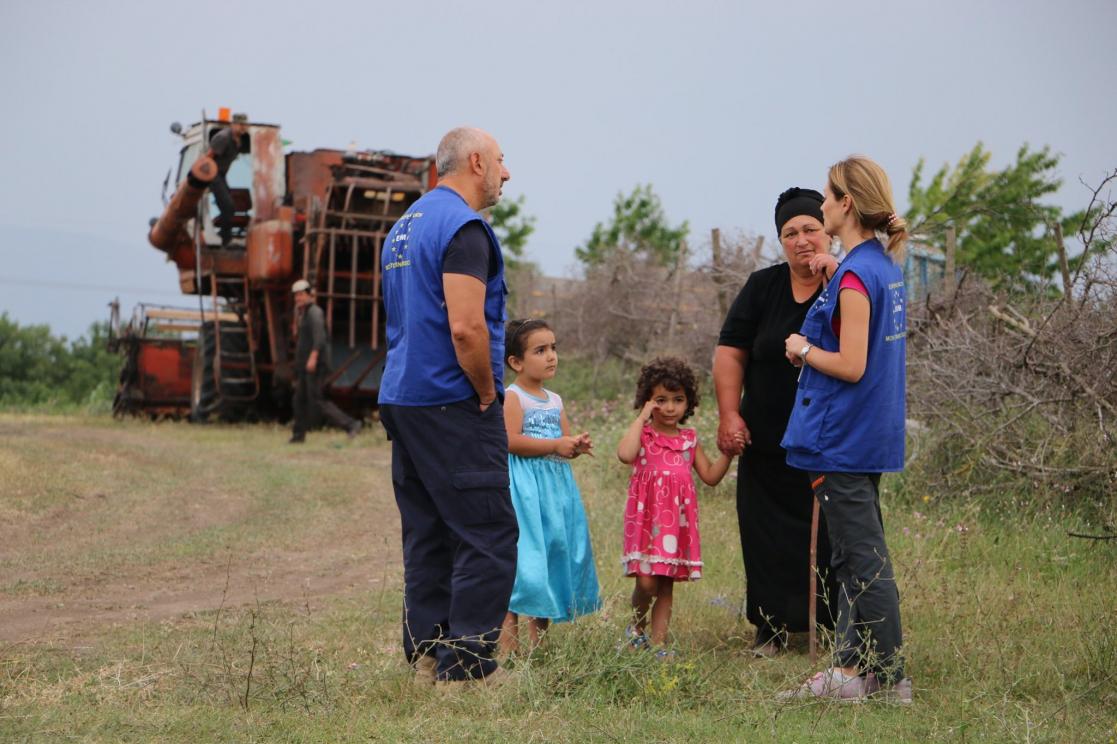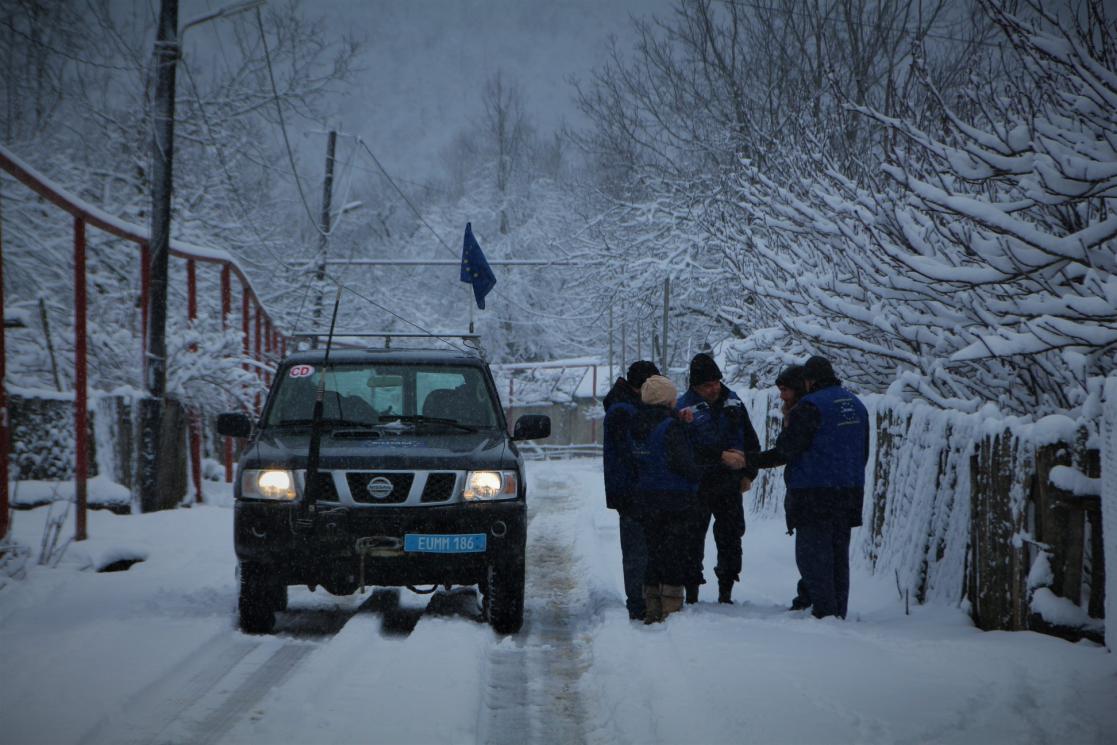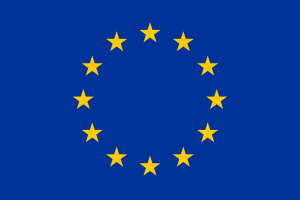EUMM Georgia: The European Union Monitoring Mission in Georgia - Civilian mission


Background
The background for the 2008 conflict between Russia and Georgia was set by Georgia’s unresolved conflicts of the 1990s in the regions of South Ossetia and Abkhazia. The year 2008 was marked by deteriorating relations between Russia and Georgia, as well as a sequence of military incidents in the conflict regions. On the night of 7 to 8 August 2008, these developments culminated in the outbreak of an armed conflict between Russia and Georgia.
On 12 August 2008, the EU-mediated a Six-Point Agreement, signed by both Georgia and Russia, which ended the conflict. On 8 September 2008, a set of Implementing Measures of the Six-Point Agreement was introduced as a reaffirmation of the commitments made in the Agreement.
On 15 September 2008, the EU decided to establish an unarmed civilian monitoring mission in Georgia to monitor compliance by all sides with the EU-mediated Six-Point Agreement and the subsequent Implementing Measures. Over 200 civilian monitors were deployed to Georgia by the EU Member States to contribute to the stabilisation of the situation on the ground following the 2008 August War.
The European Union Monitoring Mission in Georgia (EUMM) started its monitoring activities on 1 October 2008, beginning with oversight of the withdrawal of Russian armed forces from the areas adjacent to the breakaway regions of South Ossetia and Abkhazia. Ever since, the Mission has been patrolling day and night, particularly in the areas adjacent to the Administrative Boundary Lines (ABL), which separate the breakaway regions of South Ossetia and Abkhazia from the territory administered by the central Government of Georgia. The Mission's efforts have been primarily directed at observing the situation on the ground, reporting on incidents and, generally, through its presence in the relevant areas, contributing to an improved security situation.

Mission & goals
The mission’s priorities are:
- to ensure that there is no return to hostilities;
- to facilitate the resumption of a safe and normal life for the local communities living on both sides of the Administrative Boundary Lines (ABL) with South Ossetia and Abkhazia;
- to build confidence among the conflict parties;
- to inform EU policy in Georgia and the wider region.
Composition
The composition of EUMM Georgia changes constantly due to the rotation of international staff. However, it typically comprises approximately 345 personnel, including international and national staff. EUMM monitors are selected from all European Union Member States. Currently, more than 220 monitors from 25 different EU countries work for EUMM. The monitors are deployed to the three Field Offices in Gori, Mtskheta and Zugdidi as well as at the Mission Headquarters in Tbilisi. The Mission is also supported by two staff members in Brussels.

@Follow us
|
Mission/operation website: |
|
|
Facebook: |
|
|
Twitter: |
|
|
Instagram: |
|
|
LinkedIn: |
https://www.linkedin.com/company/european-union-monitoring-mission-in-georgia-eumm |
|
YouTube: |
https://www.youtube.com/channel/UCzzcRnQbH__rk3qp4cPG9aw/videos |
|
Pinterest: |
https://www.pinterest.com/press5450/_saved/
|





